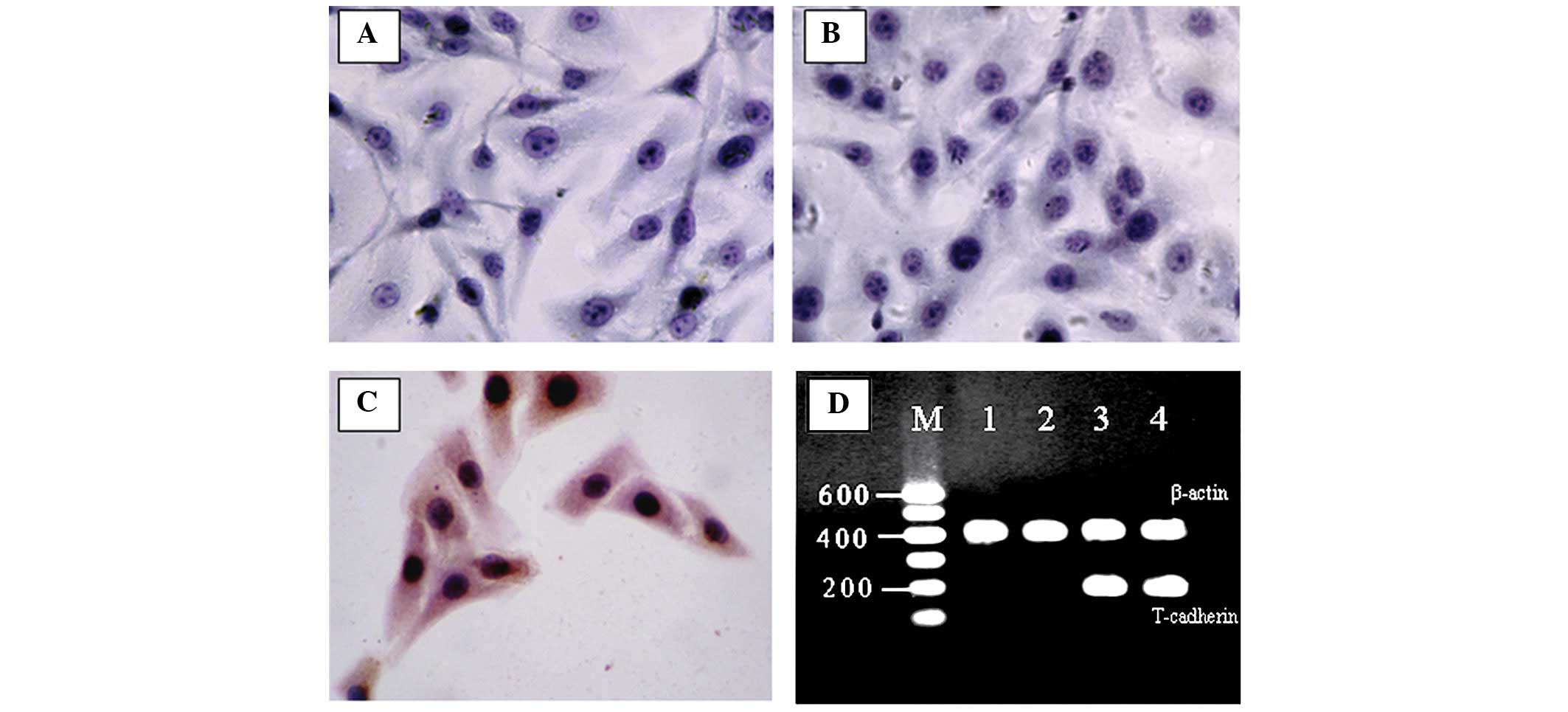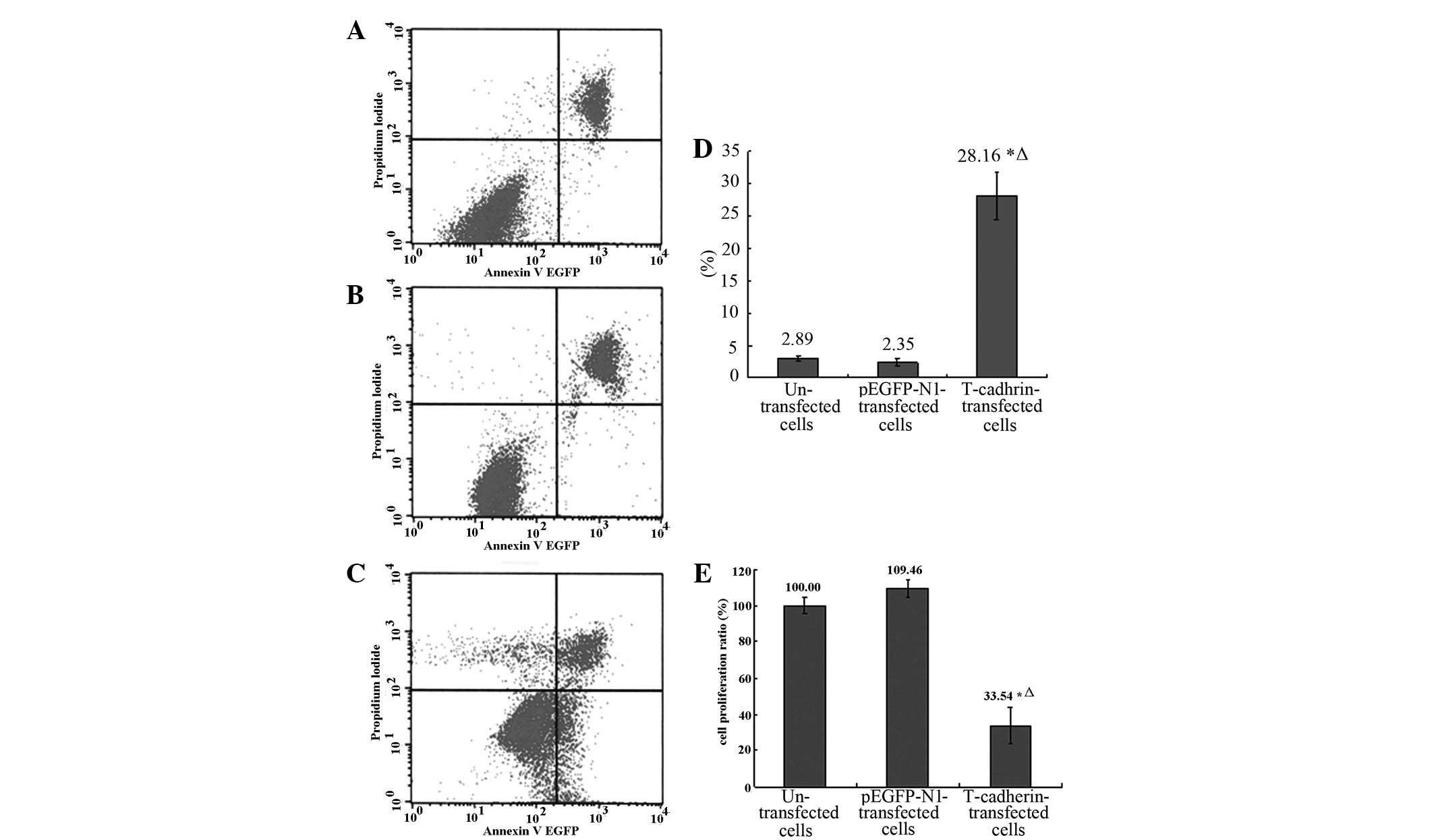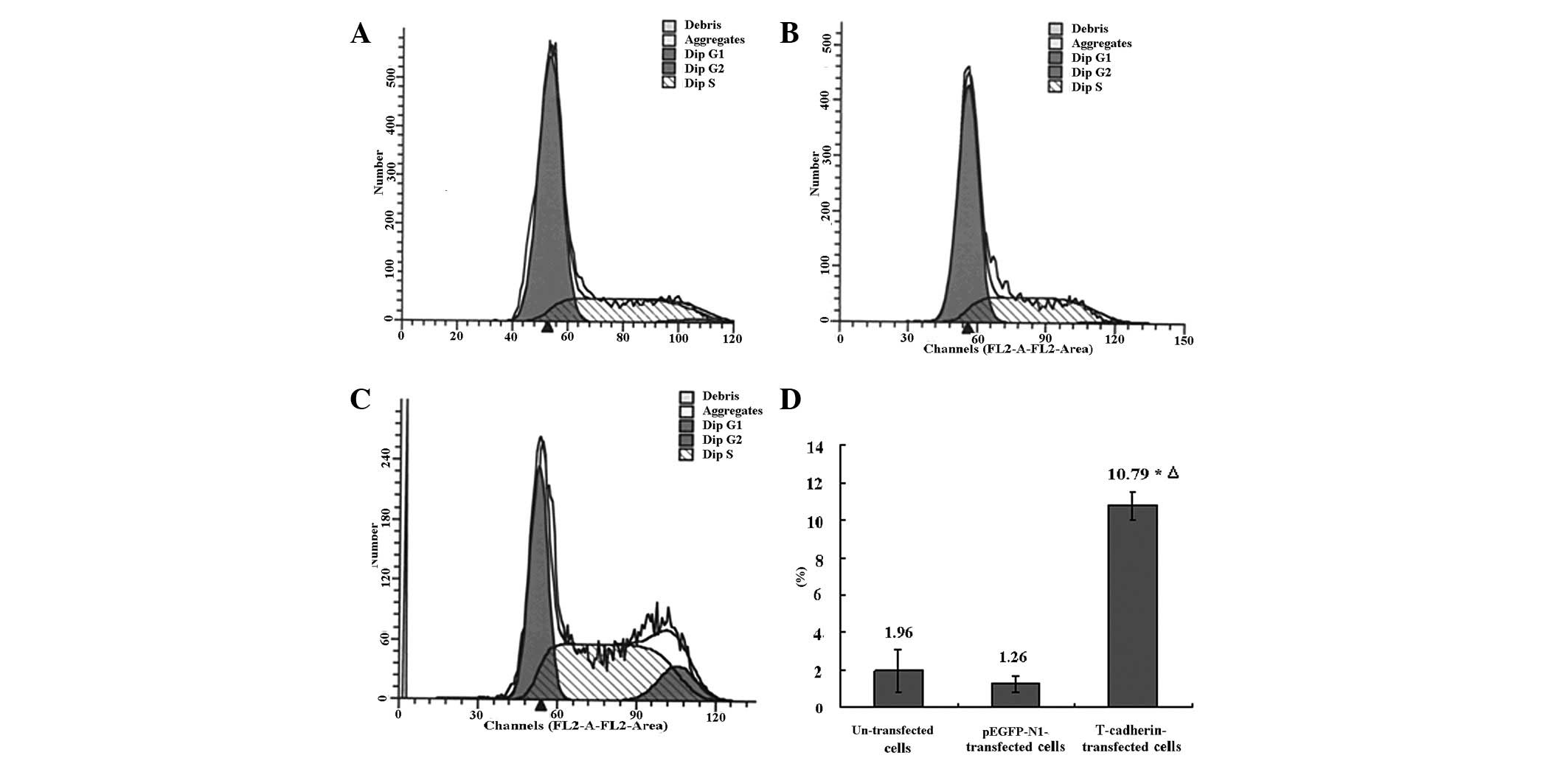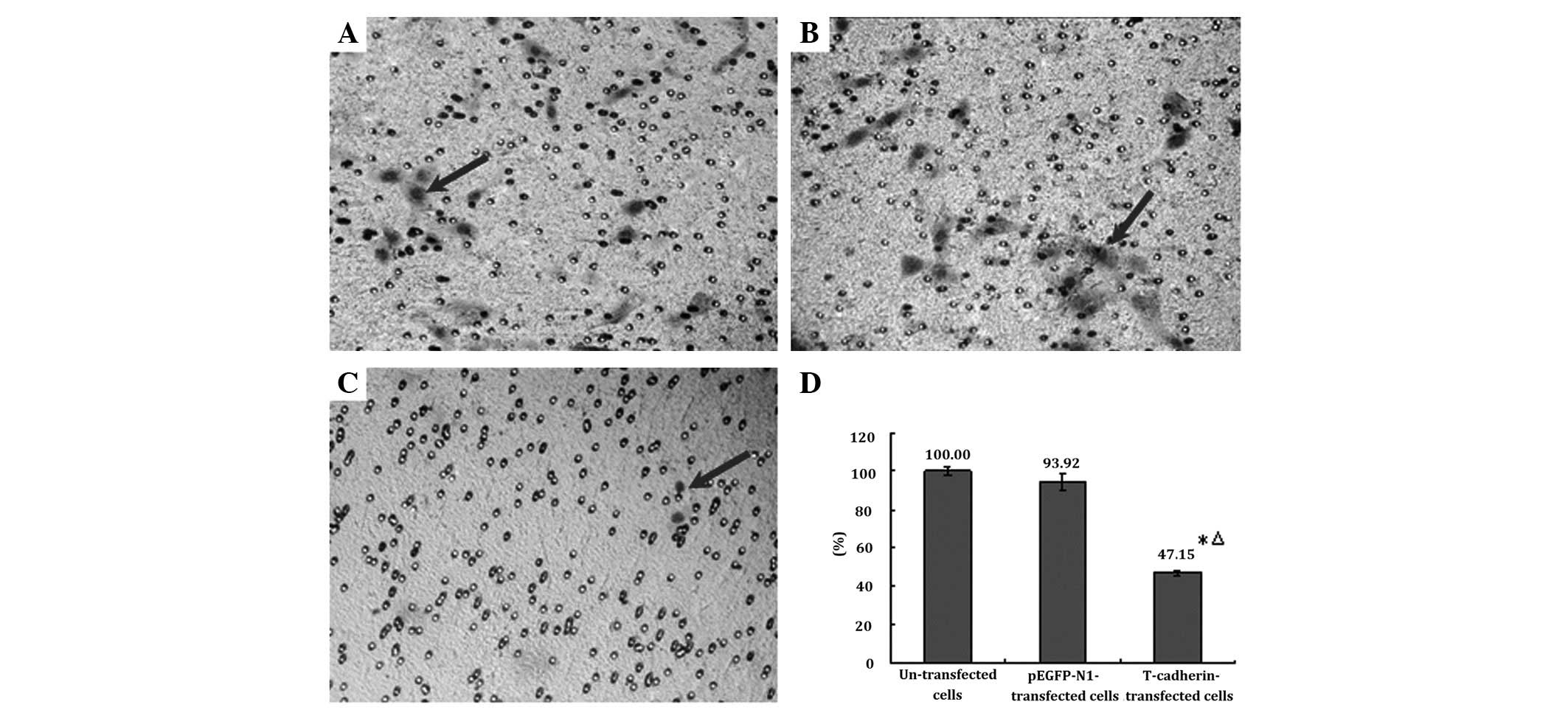|
1
|
Erdei E and Torres SM: A new understanding
in the epidemiology of melanoma. Expert Rev Anticancer Ther.
10:1811–1823. 2010. View Article : Google Scholar
|
|
2
|
Jemal A, Siegel R, Ward E, Murray T, Xu J,
Smigal C and Thun MJ: Cancer statistics, 2006. CA Cancer J Clin.
56:106–130. 2006. View Article : Google Scholar
|
|
3
|
Balch CM, Buzaid AC, Atkins MB, Cascinelli
N, Coit DG, Fleming ID, et al: A new American Joint Committee on
Cancer staging system for cutaneous melanoma. Cancer. 88:1484–1491.
2000. View Article : Google Scholar : PubMed/NCBI
|
|
4
|
Houghton AN and Polsky D: Focus on
melanoma. Cancer Cell. 2:275–278. 2002. View Article : Google Scholar
|
|
5
|
Wheelock MJ and Johnson KR: Cadherins as
modulators of cellular phenotype. Annu Rev Cell Dev Biol.
19:207–235. 2003. View Article : Google Scholar : PubMed/NCBI
|
|
6
|
van Roy F and Berx G: The cell-cell
adhesion molecule E-cadherin. Cell Mol Life Sci. 65:3756–3788.
2008.
|
|
7
|
Takeichi M: Cadherins in cancer:
implications for invasion and metastasis. Curr Opin Cell Biol.
5:806–811. 1993. View Article : Google Scholar : PubMed/NCBI
|
|
8
|
Christofori G and Semb H: The role of the
cell-adhesion molecule E-cadherin as a tumour-suppressor gene.
Trends Biochem Sci. 24:73–76. 1999. View Article : Google Scholar : PubMed/NCBI
|
|
9
|
Ranscht B and Dours-Zimmermann MT:
T-cadherin, a novel cadherin cell adhesion molecule in the nervous
system lacks the conserved cytoplasmic region. Neuron. 7:391–402.
1991. View Article : Google Scholar : PubMed/NCBI
|
|
10
|
Andreeva AV and Kutuzov MA: Cadherin 13 in
cancer. Genes Chromosomes Cancer. 49:775–790. 2010.PubMed/NCBI
|
|
11
|
Philippova M, Joshi MB, Kyriakakis E,
Pfaff D, Erne P and Resink TJ: A guide and guard: the many faces of
T-cadherin. Cell Signal. 21:1035–1044. 2009. View Article : Google Scholar : PubMed/NCBI
|
|
12
|
Kuphal S, Martyn AC, Pedley J, Crowther
LM, Bonazzi VF, Parsons PG, et al: H-cadherin expression reduces
invasion of malignant melanoma. Pigment Cell Melanoma Res.
22:296–306. 2009. View Article : Google Scholar : PubMed/NCBI
|
|
13
|
Adachi Y, Takeuchi T, Nagayama T, Ohtsuki
Y and Furihata M: Zeb1-mediated T-cadherin repression increases the
invasive potential of gallbladder cancer. FEBS Lett. 583:430–436.
2009. View Article : Google Scholar : PubMed/NCBI
|
|
14
|
Maruyama R, Toyooka S, Toyooka KO, Harada
K, Virmani AK, Zöchbauer-Müller S, et al: Aberrant promoter
methylation profile of bladder cancer and its relationship to
clinicopathological features. Cancer Res. 61:8659–8663.
2001.PubMed/NCBI
|
|
15
|
Kawakami M, Staub J, Cliby W, Hartmann L,
Smith DI and Shridhar V: Involvement of H-cadherin (CDH13) on 16q
in the region of frequent deletion in ovarian cancer. Int J Oncol.
15:715–720. 1999.PubMed/NCBI
|
|
16
|
Ehrlich M, Woods CB, Yu MC, Dubeau L, Yang
F, Campan M, et al: Quantitative analysis of associations between
DNA hypermethylation, hypomethylation, and DNMT RNA levels in
ovarian tumors. Oncogene. 25:2636–2645. 2006. View Article : Google Scholar : PubMed/NCBI
|
|
17
|
Toyooka KO, Toyooka S, Virmani AK,
Sathyanarayana UG, Euhus DM, Gilcrease M, et al: Loss of expression
and aberrant methylation of the CDH13 (H-cadherin) gene in breast
and lung carcinomas. Cancer Res. 61:4556–4560. 2001.PubMed/NCBI
|
|
18
|
Sato M, Mori Y, Sakurada A, Fujimura S and
Horii A: The H-cadherin (CDH13) gene is inactivated in human lung
cancer. Hum Genet. 103:96–101. 1998. View Article : Google Scholar : PubMed/NCBI
|
|
19
|
Brock MV, Hooker CM, Ota-Machida E, Han Y,
Guo M, Ames S, et al: DNA methylation markers and early recurrence
in stage I lung cancer. N Engl J Med. 358:1118–1128. 2008.
View Article : Google Scholar : PubMed/NCBI
|
|
20
|
Zhong Y, Delgado Y, Gomez J, Lee SW and
Perez-Soler R: Loss of H-cadherin protein expression in human
non-small cell lung cancer is associated with tumorigenicity. Clin
Cancer Res. 7:1683–1687. 2001.PubMed/NCBI
|
|
21
|
Lee SW, Reimer CL, Campbell DB, Cheresh P,
Duda RB and Kocher O: H-cadherin expression inhibits in vitro
invasiveness and tumor formation in vivo. Carcinogenesis.
19:1157–1159. 1998. View Article : Google Scholar : PubMed/NCBI
|
|
22
|
Chan DW, Lee JM, Chan PC and Ng IO:
Genetic and epigenetic inactivation of T-cadherin in human
hepatocellular carcinoma cells. Int J Cancer. 123:1043–1052. 2008.
View Article : Google Scholar : PubMed/NCBI
|
|
23
|
Sun LX, Lin ZB, Duan XS, Lu J, Ge ZH, Li
XF, et al: Enhanced MHC class I and costimulatory molecules on
B16F10 cells by Ganoderma lucidum polysaccharides. J Drug
Target. 20:582–592. 2012. View Article : Google Scholar : PubMed/NCBI
|
|
24
|
Sun LX, Lin ZB, Li XJ, Li M, Lu J, Duan
XS, et al: Promoting effects of Ganoderma lucidum
polysaccharides on B16F10 cells to activate lymphocytes. Basic Clin
Pharmacol Toxicol. 108:149–154. 2011.
|
|
25
|
Sun LX, Lin ZB, Duan XS, Lu J, Ge ZH, Li
XJ, et al: Ganoderma lucidum polysaccharides antagonize the
suppression on lymphocytes induced by culture supernatants of
B16F10 melanoma cells. J Pharm Pharmacol. 63:725–735. 2011.
View Article : Google Scholar
|
|
26
|
Sun LX, Lin ZB, Duan XS, Lu J, Ge ZH, Song
YX, et al: Stronger cytotoxicity in CTLs with granzyme B and
porforin was induced by Ganoderma lucidum polysaccharides
acting on B16F10 cells. Biomed Prev Nutr. 2:113–118. 2012.
View Article : Google Scholar
|
|
27
|
Hufbauer M, Lazić D, Reinartz M, Akgül B,
Pfister H and Weissenborn SJ: Skin tumor formation in human
papillomavirus 8 transgenic mice is associated with a deregulation
of oncogenic miRNAs and their tumor suppressive targets. J Dermatol
Sci. 64:7–15. 2011. View Article : Google Scholar : PubMed/NCBI
|
|
28
|
Liang Y and Sundberg JP: SHARPIN regulates
mitochondria-dependent apoptosis in keratinocytes. J Dermatol Sci.
63:148–153. 2011. View Article : Google Scholar : PubMed/NCBI
|
|
29
|
Lai WW, Hsiao YP, Chung JG, Wei YH, Cheng
YW and Yang JH: Synergistic phototoxic effects of glycolic acid in
a human keratinocyte cell line (HaCaT). J Dermatol Sci. 64:191–198.
2011. View Article : Google Scholar : PubMed/NCBI
|
|
30
|
Chang SP, Shen SC, Lee WR, Yang LL and
Chen YC: Imatinib mesylate induction of ROS-dependent apoptosis in
melanoma B16F0 cells. J Dermatol Sci. 62:183–191. 2011. View Article : Google Scholar : PubMed/NCBI
|
|
31
|
Dong D, Jiang M, Xu X, Guan M, Wu J, Chen
Q and Xiang L: The effects of NB-UVB on the hair follicle-derived
neural crest stem cells differentiating into melanocyte lineage in
vitro. J Dermatol Sci. 66:20–28. 2012. View Article : Google Scholar : PubMed/NCBI
|
|
32
|
Batlle E, Sancho E, Francí C, Domínguez D,
Monfar M, Baulida J, et al: The transcription factor snail is a
repressor of E-cadherin gene expression in epithelial tumour cells.
Nat Cell Biol. 2:84–89. 2000. View
Article : Google Scholar : PubMed/NCBI
|
|
33
|
Comijn J, Berx G, Vermassen P, Verschueren
K, van Grunsven L, Bruyneel E, et al: The two-handed E box binding
zinc finger protein SIP1 downregulates E-cadherin and induces
invasion. Mol Cell. 7:1267–1278. 2001. View Article : Google Scholar : PubMed/NCBI
|
|
34
|
Wheelock MJ, Soler AP and Knudsen KA:
Cadherin junctions in mammary tumors. J Mammary Gland Biol
Neoplasia. 6:275–285. 2001. View Article : Google Scholar : PubMed/NCBI
|
|
35
|
Goodwin M and Yap AS: Classical cadherin
adhesion molecules: coordinating cell adhesion, signaling and the
cytoskeleton. J Mol Histol. 35:839–844. 2004. View Article : Google Scholar : PubMed/NCBI
|
|
36
|
Drees F, Pokutta S, Yamada S, Nelson WJ
and Weis WI: Alpha-catenin is a molecular switch that binds
E-cadherin-beta-catenin and regulates actin-filament assembly.
Cell. 123:903–915. 2005. View Article : Google Scholar : PubMed/NCBI
|
|
37
|
Doyle DD, Goings GE, Upshaw-Earley J, Page
E, Ranscht B and Palfrey HC: T-cadherin is a major
glycophosphoinositol-anchored protein associated with noncaveolar
detergent-insoluble domains of the cardiac sarcolemma. J Biol Chem.
273:6937–6943. 1998. View Article : Google Scholar
|
|
38
|
Koller E and Ranscht B: Differential
targeting of T- and N-cadherin in polarized epithelial cells. J
Biol Chem. 271:30061–30067. 1996. View Article : Google Scholar : PubMed/NCBI
|
|
39
|
Philippova M, Ivanov D, Tkachuk V, Erne P
and Resink TJ: Polarisation of T-cadherin to the leading edge of
migrating vascular cells in vitro: a function in vascular cell
motility? Histochem Cell Biol. 120:353–360. 2003. View Article : Google Scholar : PubMed/NCBI
|
|
40
|
Kinch MS, Petch L, Zhong C and Burridge K:
E-cadherin engagement stimulates tyrosine phosphorylation. Cell
Adhes Commun. 4:425–437. 1997. View Article : Google Scholar : PubMed/NCBI
|
|
41
|
Philippova MP, Bochkov VN, Stambolsky DV,
Tkachuk VA and Resink TJ: T-cadherin and signal-transducing
molecules co-localize in caveolin-rich membrane domains of vascular
smooth muscle cells. FEBS Lett. 429:207–210. 1998. View Article : Google Scholar : PubMed/NCBI
|
|
42
|
Vestal DJ and Ranscht B: Glycosyl
phosphatidylinositol-anchored T-cadherin mediates
calcium-dependent, homophilic cell adhesion. J Cell Biol.
119:451–461. 1992. View Article : Google Scholar : PubMed/NCBI
|
|
43
|
Dames SA, Bang E, Haüssinger D, Ahrens T,
Engel J and Grzesiek S: Insights into the low adhesive capacity of
human T-cadherin from the NMR structure of Its N-terminal
extra-cellular domain. J Biol Chem. 283:23485–23495. 2008.
View Article : Google Scholar : PubMed/NCBI
|
|
44
|
Takeuchi T and Ohtsuki Y: Recent progress
in T-cadherin (CDH13, H-cadherin) research. Histol Histopathol.
16:1287–1293. 2001.PubMed/NCBI
|
|
45
|
Joshi MB, Philippova M, Ivanov D,
Allenspach R, Erne P and Resink TJ: T-cadherin protects endothelial
cells from oxidative stress-induced apoptosis. FASEB J.
19:1737–1739. 2005.PubMed/NCBI
|
|
46
|
Fredette BJ, Miller J and Ranscht B:
Inhibition of motor axon growth by T-cadherin substrata.
Development. 122:3163–3171. 1996.PubMed/NCBI
|
|
47
|
Rubina K, Sysoeva V, Semina E, Kalinina N,
Yurlova E, Khlebnikova A and Molochkov V: Malignant transformation
in skin is associated with the loss of T-cadherin expression in
human keratinocytes and heterogeneity in T-cadherin expression in
tumor vasculature. Tumor Angiogenesis. Ran S: InTech; New York, NY:
pp. 135–166. 2012
|
|
48
|
Lee SW: H-cadherin, a novel cadherin with
growth inhibitory functions and diminished expression in human
breast cancer. Nat Med. 2:776–782. 1996. View Article : Google Scholar : PubMed/NCBI
|
|
49
|
Toyooka S, Toyooka KO, Harada K, Miyajima
K, Makarla P, Sathyanarayana UG, et al: Aberrant methylation of the
CDH13 (H-cadherin) promoter region in colorectal cancers and
adenomas. Cancer Res. 62:3382–3386. 2002.PubMed/NCBI
|


















